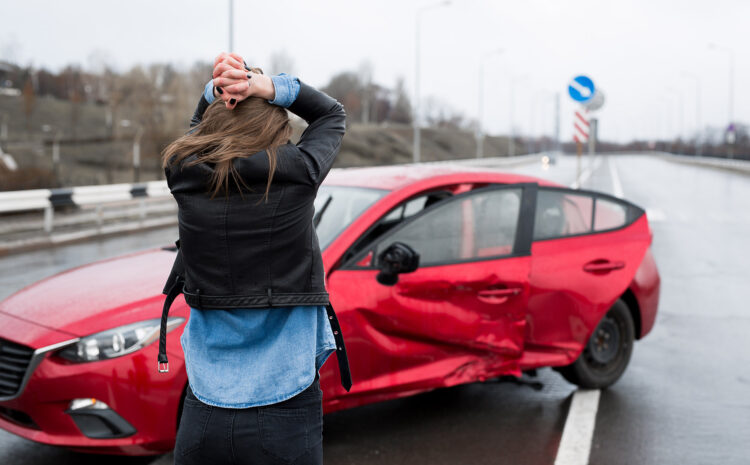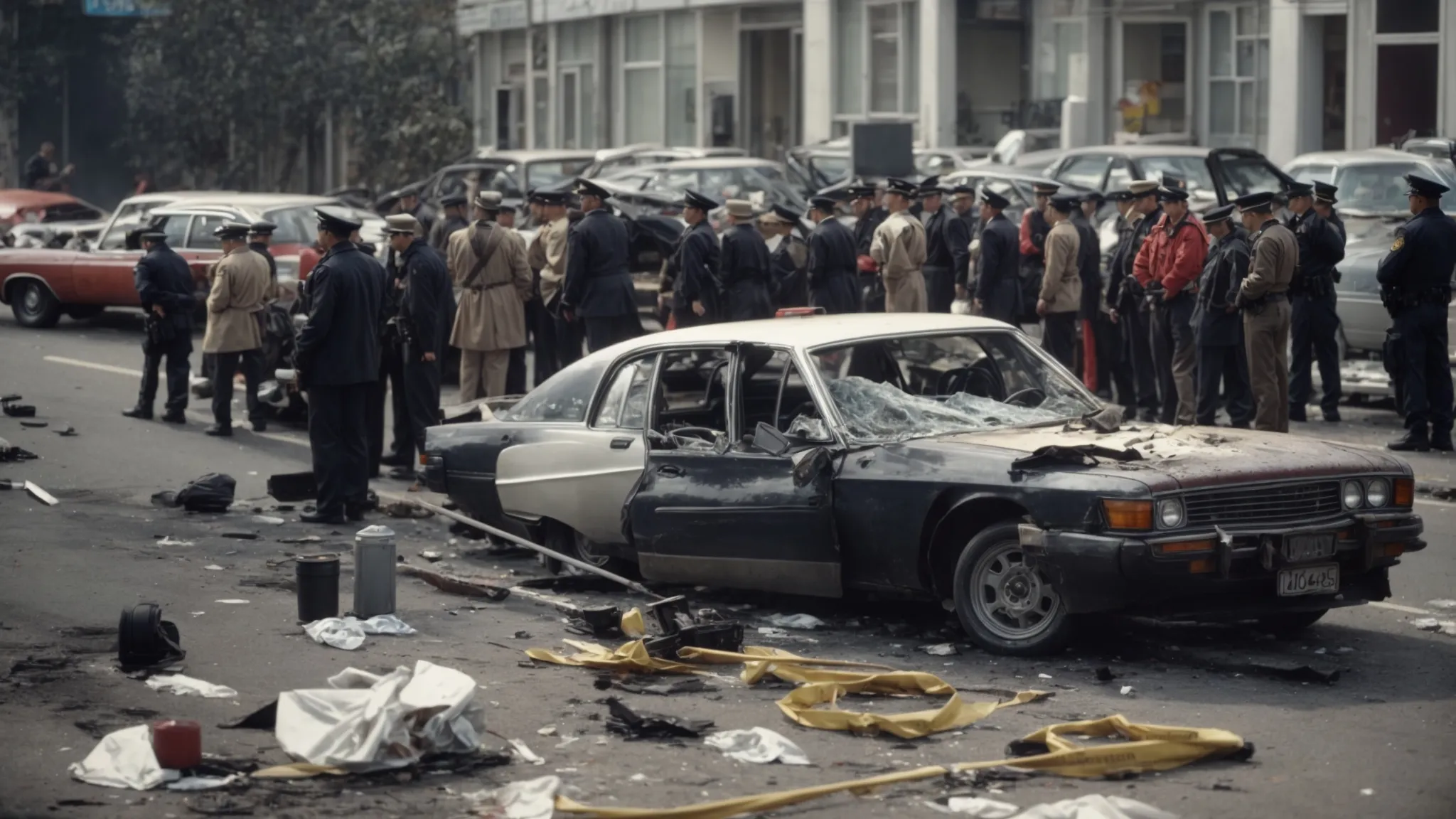
Your Post-Crash Plan: A Guide to Handling Auto Accidents
When you find yourself in the aftermath of a vehicular accident, knowing the correct steps to take can significantly influence the recovery process.
It’s not just about vehicle repairs; it’s about safeguarding your legal rights, ensuring your health isn’t at risk, and navigating the oftentimes murky waters of insurance protocols.
Amid the chaos, a clear, composed strategy can transform an overwhelming situation into a manageable one.
Let’s gear up with crucial knowledge and tailored advice for those critical moments following a collision.
Keep reading to equip yourself with the essentials for effectively handling post-accident challenges.
Key Takeaways
- Prioritize Safety and Assess for Immediate Dangers Following an Accident
- Contact Emergency Services Swiftly for Assistance and Medical Evaluation
- Exchange and Accurately Document All Relevant Information at the Scene
- Notify Your Attorney Quickly so They Can Initiate the Claim Process with your Insurance
- Seek Medical Attention Regardless of Perceived Injury Severity
Immediate Actions to Take After a Car Crash

Seconds after the shattering sound of metal meeting metal fades, adrenaline courses through your veins; an auto accident uproots the calm rhythm of your day like a tempest upheaving a once-tranquil harbor.
Amidst this turmoil, understanding your initial steps are vital for both your well-being and legal peace of mind.
Safety demands your immediate attention, necessitating a thorough yet composed evaluation of the vicinity for hazards.
Ensuing that, the necessity to reach out to emergency responders can’t be overstated, as time is often a critical factor.
Once the pressing matter of health and security is stabilized, gathering and sharing particulars with those involved lays the groundwork for resolving the predicaments that loom in the aftermath.
These irrefutable actions form the bedrock of your journey toward resolution, acting as the compass to navigate through the unfolding complexity.
Ensure Your Safety by Assessing the Scene
Your first priority is assessing your immediate surroundings for safety. If your vehicle is operational and in a precarious location, maneuver it to the nearest safe spot, away from oncoming traffic, if state laws permit.
Simultaneously, remain vigilant for any signs of fire or smoke emanating from your vehicle or others involved. Should you detect these dangers, distance yourself and any passengers as swiftly and cautiously as possible to avoid further risk.
Contact Emergency Services for Assistance
Grasping the urgency of the moment, you need to summon assistance without delay. Reach for your phone and dial emergency services, articulating the specifics of your location and the incident with clarity.
Communicate your need for both medical personnel and law enforcement, painting a clear picture of the urgency – whether there are injuries, potential hazards, or infractions warranting immediate attention.
Exchange Necessary Information With Involved Parties
Upon ensuring everyone’s safety and summoning emergency services, turn your attention to the exchange of vital information with other parties involved. It’s imperative to obtain their names, contact details, insurance information, and vehicle registration details, ensuring that the specifics are documented accurately for future reference.
While you collect this data, maintain a neutral demeanor and avoid entering discussions about fault or apologies, as these admissions can complicate later proceedings. Instead, focus solely on documenting the facts and, if possible, capturing photographic evidence of the scene, vehicles, and any relevant street signs or signals.
Documenting the Accident for Legal Purposes

Materializing from the haze of an accident, you confront the necessity of painting a factual tableau of the event.
It’s not merely about recollections; it’s about fortifying your account with indisputable evidence.
Capturing imagery, jotting down every nuance of the scene, and securing witness testimonies furnish the foundation that supports your narrative.
As you embark on this essential task, bear in mind each shred of data has the power to sway the balance of legal outcomes considerably in your favor.
Take Photos and Notes of the Accident Scene
Transform your phone into a tool of indisputable truth. Capture images from various angles, ensuring you document the positions of vehicles, street signs, damage held by each car, surrounding area, and any conditions that could have played a role in the accident. High-resolution visuals serve as unspoken witnesses when memories blur, and accuracy counts.
Jot down immediate impressions and details that photos alone might miss. Note the weather, the time, the sequence of events as you recall, and any statements made by those involved. These notes, seemingly trivial in the stressful moment, often emerge as pivotal pieces of your legal puzzle later on.
Gather Witness Statements and Contact Details
Should bystanders be present, their perspective might shed light on aspects of the event not apparent to you. Approach them with respect, request their recounting of the incident, and if they’re amenable, secure their contact information. Their cooperation could provide critical insights that corroborate your recollection.
Securing witness accounts promptly is paramount, as details can fade swiftly. Encourage them to share their observations while the incident remains fresh in their minds and ascertain their willingness to be contacted by law enforcement or insurance companies, to substantiate the compiled evidence.
Understanding Your Claim Post-Accident

Reeling from the immediate aftermath of a collision, your thoughts might be a whirlwind of concerns. In the wake of such turmoil, timely communication with your attorney and a comprehensive grasp on the intricacies of your insurance policy are the keystones to ensuring you’re aptly prepared for the next steps.
Maneuver through this process with precision; your swift action and understanding of what protections your coverage affords you are essential in mitigating the financial reverberations of an auto accident.
Notify Your Attorney Promptly
Your reaction to an accident doesn’t end with the on-scene steps; reaching out to your attorney is one of your most critical and timely actions. Initiate contact as soon as you safely can, detailing the incident and providing a preliminary briefing on its particulars.
This swift communication sets in motion the necessary assessments and considerations your situation demands, allowing your attorney to provide you with the support you need and guidance to navigate the complexities ahead.
Seeking Medical Attention Even Without Obvious Injuries

After the clamor and confusion of an auto accident dissipates, your body might still be awash in the adrenaline that masks pain and injuries.
It’s crucial not to let the absence of immediate, searing pain mislead you into complacency.
Neglecting to seek medical evaluation could jeopardize not just your physical health but also your ability to secure insurance coverage for latent injuries.
Therefore, whether you notice harm or feel relatively unscathed, prioritize a medical assessment.
Remember, meticulous record-keeping post-evaluation is as important as the exam itself.
These steps are not mere formalities but serve as your bulwark in the unforeseen event of injury claims emerging in the days following the incident.
Visit a Doctor as a Precautionary Measure
Securing a thorough medical evaluation post-collision is non-negotiable, even if you emerge seemingly unscathed. Your body’s natural response may conceal trauma, and timely detection is the linchpin in preventing latent complications from escaping notice.
Conversely, a certified medical practitioner’s assessment provides a documented account of your health status, forming an integral part of your insurance claims process. This preemptive step assures that no underlying conditions are overlooked, shielding you from potential future medical and financial hurdles.
Keep Records of Any Medical Treatments
Maintain meticulous records of every medical interaction following your accident, detailing treatments, examinations, and prescribed medications. This documentation is critically vital, becoming an essential facet of your insurance claim and serving as concrete evidence should legal action be necessary.
Preserve any receipts, medical reports, and discharge instructions provided to you. This trove of information solidifies your case, ensuring you can substantiate any claim for medical expenses incurred as a direct consequence of the auto accident.
Conclusion
Navigating the aftermath of an auto accident requires a clear, structured plan to ensure your safety, legal peace of mind, and financial protection.
Prioritizing your immediate safety and that of others at the scene is of utmost importance.
Swiftly contacting emergency services and thoroughly documenting the accident scene with photos, notes, and witness statements lay the foundation for any potential legal proceedings.
Even if no injuries are evident, a medical evaluation is crucial to uncover any concealed harm and protect future insurance claims.
In complex or severe cases, enlisting an auto accident attorney ensures that your rights are safeguarded, and you receive fair compensation.
This guide underscores the importance of a quick and orderly response to an auto accident, safeguarding your well-being and interests in the chaotic moments and days that follow.

